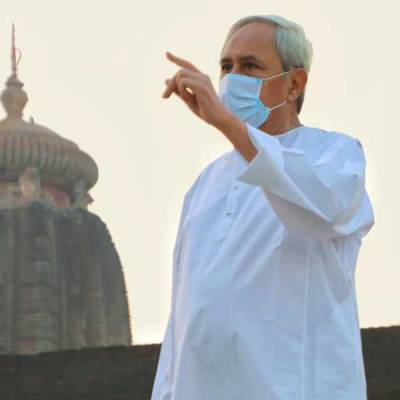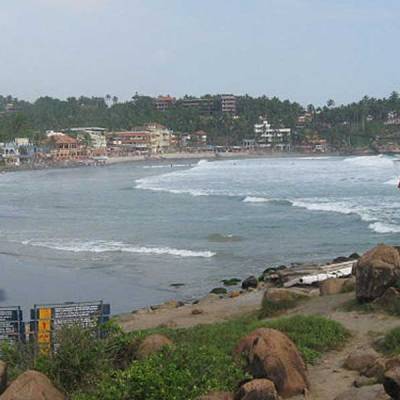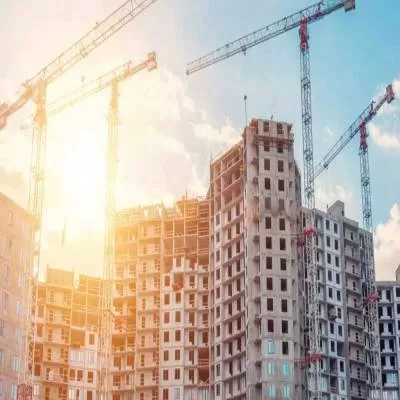- Home
- Real Estate
- Are we ignoring our heritage buildings?
Are we ignoring our heritage buildings?
Apart From World Heritage Sites And A Few Important Monuments, Asi Does Not Have A Good Record For Maintenance Of Monuments. The Same Holds True For The State Archaeology Departments And Pwds. “CPWD Has Removed Traditional Building Practices And Items From The Schedule Of Rates (SOR) And The Engineers Are Not Equipped With Traditional Repair Knowledge Anymore,” Adds A Vijaya, Director Programme, Architectural Heritage Division, Indian National Trust For Art & Cultural Heritage (INTACH). Also, Repair With Modern Materials And Techniques Damage Our Traditional Buildings Further.
Evidently, Responding To Heritage In A Sensitive Way Is Important. That Said, Brinda Somaya, Principal Architect, Somaya And Kalappa Consultants, Points To “technical, Organisational And Financial Challenges.” One Major Technical Challenge Is Carrying Out Retrofitting And Maintenance Works Without Appointing Expert Professionals Well-Versed In The Field Of Conservation. “Poor Financial Support And The Rising Cost Of Materials And Technologies Have Become Major Issues Too,” She Adds. While Introducing Adaptive Reuse In Heritage Buildings For Contemporary Functions, One Needs To Incorporate Modern Technologies Such As Hvac Systems, Fire-Fighting, Security And Lighting, Which Are Challenges Of A Different Sort.
Conservation Architect Vikas Dilawari, Too, Foresees Several Challenges In The Field As It Is A Newly Emerging Discipline. “The Government Has Introduced Heritage Legislations For Maintaining Significant Heritage Buildings But Has Not Given Any Encouragement Vis-A-Vis Law Or Financial Support For Its Repairs,” He Says. As A Result, Conservation Does Not Find A Strong Case To Survive And Redevelopment Or Reconstruction Takes Over. In His View, For Conservation, The Person/Agency Should Have A Good Philosophical Understanding Of Heritage/History As These Require Special Skill Sets Depending Upon The Age, Condition, Materials, Etc, Of The Structure. Traditional Materials Are Not Is Products—Lime, For Example—And, Therefore, They Are Not Easily Available Sometimes. Also, The Traditional Skills For Handling These have Vanished Or Are Discontinued And Need To Be Revived.
Vijaya Believes That The Biggest Challenge Or Threat Is Ignorance And Apathy Towards Heritage Buildings. And Then, Of Course, Is Allocation Of Funds For Repair And Maintenance. “We Do Not Follow The Saying, ‘A Stitch In Time Saves Nine’,” She Rues. “We Vandalise And Wait For Them To Fall.”
Shriyal Sethumadhavan
- Monuments
- ASI
- Archaeological Survey of India
- PWD
- Railways
- universities
- schools
- postal departments
- hospitals
- government
- CPWD
- A Vijaya
- Architectural Heritage Division
- Indian National Trust for Art & Cultural Heritage
- INTACH
- Brinda Somaya
- Somaya and Kalappa Consultants
- heritage
- modern materials
- HVAC systems
- fire-fighting
- security
- lighting
- heritage legislations
- heritage buildings
- conservation
- architect
- Vikas Dilawari,
Today, There Are 3,686 Monuments Protected By Archaeological Survey Of India (ASI), 7,000-Odd Structures Protected By State Archaeology Departments, And At Least Half-A-Million Buildings Under Pwd, Railways, Universities, Schools, Postal Departments, Hospitals, Cantonments And Other Government Departments. Apart From World Heritage Sites And A Few Important Monuments, Asi Does Not Have A Good Record For Maintenance Of Monuments. The Same Holds True For The State Archaeology Departments And Pwds. “CPWD Has Removed Traditional Building Practices And Items From The Schedule Of Rates (SOR) And The Engineers Are Not Equipped With Traditional Repair Knowledge Anymore,” Adds A Vijaya, Director Programme, Architectural Heritage Division, Indian National Trust For Art & Cultural Heritage (INTACH). Also, Repair With Modern Materials And Techniques Damage Our Traditional Buildings Further. Evidently, Responding To Heritage In A Sensitive Way Is Important. That Said, Brinda Somaya, Principal Architect, Somaya And Kalappa Consultants, Points To “technical, Organisational And Financial Challenges.” One Major Technical Challenge Is Carrying Out Retrofitting And Maintenance Works Without Appointing Expert Professionals Well-Versed In The Field Of Conservation. “Poor Financial Support And The Rising Cost Of Materials And Technologies Have Become Major Issues Too,” She Adds. While Introducing Adaptive Reuse In Heritage Buildings For Contemporary Functions, One Needs To Incorporate Modern Technologies Such As Hvac Systems, Fire-Fighting, Security And Lighting, Which Are Challenges Of A Different Sort. Conservation Architect Vikas Dilawari, Too, Foresees Several Challenges In The Field As It Is A Newly Emerging Discipline. “The Government Has Introduced Heritage Legislations For Maintaining Significant Heritage Buildings But Has Not Given Any Encouragement Vis-A-Vis Law Or Financial Support For Its Repairs,” He Says. As A Result, Conservation Does Not Find A Strong Case To Survive And Redevelopment Or Reconstruction Takes Over. In His View, For Conservation, The Person/Agency Should Have A Good Philosophical Understanding Of Heritage/History As These Require Special Skill Sets Depending Upon The Age, Condition, Materials, Etc, Of The Structure. Traditional Materials Are Not Is Products—Lime, For Example—And, Therefore, They Are Not Easily Available Sometimes. Also, The Traditional Skills For Handling These have Vanished Or Are Discontinued And Need To Be Revived. Vijaya Believes That The Biggest Challenge Or Threat Is Ignorance And Apathy Towards Heritage Buildings. And Then, Of Course, Is Allocation Of Funds For Repair And Maintenance. “We Do Not Follow The Saying, ‘A Stitch In Time Saves Nine’,” She Rues. “We Vandalise And Wait For Them To Fall.” Shriyal Sethumadhavan






















